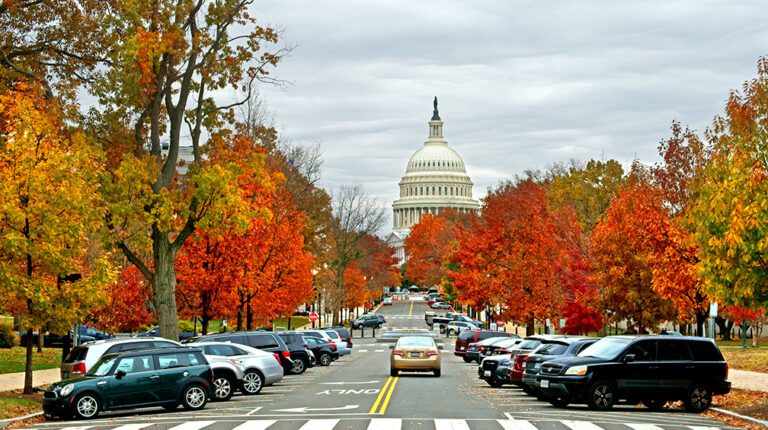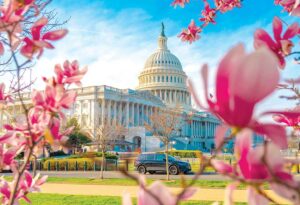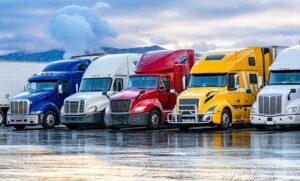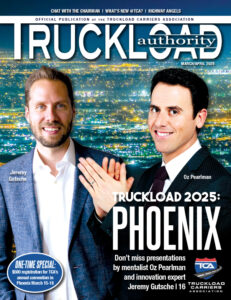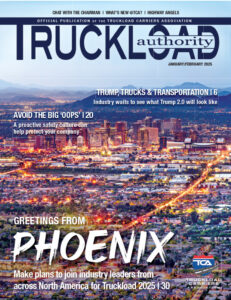It’s been a busy summer in Washington and across the continent. Congress is debating regulations of self-driving vehicles, including big rigs, and the CVSA released results from this year’s International Roadcheck. Trucking coalitions are urging Congress to act on a number of issues, including emissions regulations and the FET. In other news, motor carriers are now required to submit additional injury reports to OSHA, and a report examines the risk of electrical fires in battery-powered vehicles of all sizes and types.
Clean Freight Coalition warns feds of challenges of zero-emissions deadline
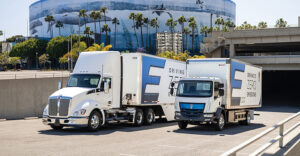
Leaders from the Clean Freight Coalition (CFC) met with officials from the Joint Office of Energy and Transportation (Joint Office) in July to discuss the challenges and opportunities of transitioning the nation’s commercial truck fleet to low-and zero-emission vehicles.
The meeting between CFC and the Joint Office came as emerging state and federal regulations aim to push the transportation sector toward decarbonization.
The Joint Office was created through the Bipartisan Infrastructure Law to facilitate collaboration between the U.S. Department of Energy and the U.S. Department of Transportation on deploying a network of electric vehicle chargers and zero-emission fueling infrastructure. The CFC, an alliance of freight transportation stakeholders committed to a zero-emission future, launched in March to educate policymakers on these issues.
During the meeting, the CFC urged the Joint Office to consider the heavy-duty sector when granting federal funds, according to a news release. CFC cites a massive infrastructure gap as one of the largest hurdles to a seamless transition away from carbon-based fuels — one that policymakers need to focus on now, according to the CFC.
“One of the fatal flaws in California’s electric-truck mandates is that the infrastructure buildout is light years behind the hyper-aggressive time lines set forth in regulation,” said Jim Mullen, executive director of the CFC.
“By trying to force the trucking industry to electrify without the charging infrastructure and power capacity that will be required, the state is setting trucking and the supply chain up for failure,” he said. “That’s why in our meeting with the Joint Office we stressed why EPA should not propose ZEV-dependent rules prior to ensuring the necessary resources are actually in place.”
To realize the scalable deployment of medium- and heavy-duty battery-electric trucks envisioned by Environmental Protection Agency’s GHG3 rulemaking, 15,625 chargers would have to be installed every month between now and 2032, according to a Ricardo analysis. To date, no state has directed any National Electric Vehicle Infrastructure (NEVI) grant program funds to medium- and heavy-duty charging infrastructure.
For charging to be compatible with complex truck driving schedules, charging will have to take place at existing truck parking locations along interstate routes — yet the industry already faces a chronic nationwide shortage of commercial truck parking.
“We need to get this right, which frankly the consequences are too great,” said Dan Van Alstine, chairman of the American Trucking Associations and president and COO for Ruan Transportation Management Systems. “It’s critical that any regulatory framework is connected to the realities of trucking operations. That is the key to success, and that is why we are here in Washington having these conversations today.”
Truckload Carriers Association President Jim Ward said, “The essentiality of trucking to the supply chain became quite obvious during the pandemic, and our members remain committed to keeping America moving. To continue providing the quality of service the general public has come to expect, motor carriers must have reliable, affordable, and safe equipment available to them.”
Scott McCandless, chairman of the American Truck Dealers, said the trucking industry needs adequate lead times across all market segments to ensure these vehicles are affordable and supported by the necessary infrastructure.
“It is troubling that government is pushing the regulation of zero-emission vehicles in a way that could slow down rather than accelerate the adoption by truck customers,” he added.
Andy Richard, CEO of Sapp Bros., said policies shouldn’t ignore the lower-carbon fuels that are already at the industry’s disposal.
“A market-driven, technology-neutral approach will advance the adoption of alternative fuels without picking winners and losers,” Richard said. “Biodiesel and renewable diesel represent the best option that fleets have today to reduce their carbon emissions, and this will be the case for the foreseeable future. The right policies will encourage fuel retailers to make these investments without sacrificing efforts on electrification, hydrogen or other next-generation fuels.”
Ryan Streblow, president and CEO of the National Tank Truck Carriers, cautioned that “the entire transportation ecosystem is at risk.”
“The tank truck industry envisions low and zero emission commercial trucks, but current time lines and goals must account for technology availability, affordability, infrastructure overall and a scalable energy source,” he said.
Trucking industry groups urge Congress to repeal FET on trucks, trailers
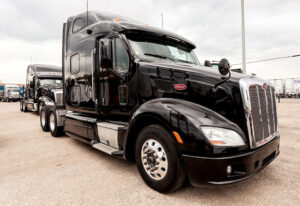
A coalition of nine industry groups, including the Truckload Carriers Association (TCA), the American Trucking Associations (ATA), and others, in July sent a letter to the leaders of Senate Finance Committee and House Ways and Means Committee asking for the federal excise (FET) on the sale of heavy-duty trucks and trailers to be repealed.
The group also expressed their support for the Modern, Clean and Safe Trucks Act.
The bipartisan legislation would repeal the FET and immediately reduce the cost of new, cleaner and safer trucks by 12%, making it easier for fleets to upgrade their equipment.
“Eliminating this tax will remove a barrier to retiring older trucks that lack modern emissions control and safety technologies, allowing owners to replace them with modern, clean models that are safer and more environmentally friendly,” the coalition wrote in the letter.
The letter further states, “Our coalition is grateful to the House and Senate champions of the Modern, Clean and Safe Trucks Act (H.R. 1440, S. 694) for once again putting forward legislation that will help the trucking industry unleash the latest technologies. Stakeholders across the trucking supply chain stand ready to work with those champions and other leaders in Congress to advance this important proposal. As the Senate Finance Committee and House Ways and Means Committee consider tax policies to continue growing our economy, we are grateful for your consideration of repealing the outdated FET.”
Nearly half of the trucks in America’s trucking fleet were manufactured before 2010, according to the ATA. Each new clean-diesel truck will reduce emissions by 83% compared to the pre-2010 model power unit it replaces on the nation’s highways.
According to a statement released by ATA, “Today’s vehicles are also equipped with the latest safety innovations that have been proven to save lives. New truck models meet 2015 standards for stability control and increasingly include advanced driver assistance systems that improve braking, steering, warning, and monitoring responses to prevent crashes.”
The letter was co-signed by the leaders of TCA, ATA, National Tank Truck Carriers, NATSO, SIGMA, the Diesel Technology Forum, the Truck & Engine Manufacturers Association and the Clean Freight Coalition.
Trucking among industries required to submit additional injury data to OSHA

A new ruling requires scores of employers in industries considered “high hazard” to electronically submit detailed data about worker injuries to the U.S. Occupational Safety and Health Administration (OSHA). Employers are already required to keep records of injuries, but they are only submitted to OSHA if the agency conducts an investigation.
OSHA’s final rule is similar to one that was adopted by the Obama administration and then largely rolled back under former Republican President Donald Trump before it could take effect. The new rule, which takes effect Jan. 1, 2024, requires companies with 100 or more employees in industries that OSHA deems hazardous to annually submit forms that include details of specific safety incidents.
A wide range of industries are covered by the rule, including trucking and transportation, grocery stores and other retail businesses, agriculture, manufacturing, nursing homes, waste collection, and delivery services. OSHA said it designated industries as hazardous if they averaged at least 3.5 injuries per 100 full-time employees between 2017 and 2019.
Doug Parker, head of OSHA, said in a statement the agency will use the data to inform outreach and enforcement efforts designed to reduce worker injuries and illnesses.
“The safety and health community will benefit from the insights this information will provide at the industry level, while workers and employers will be able to make more informed decisions about their workplace’s safety and health,” Parker said.
However, Ben Brubeck, vice president of the construction trade group Associated Builders and Contractors, said the rule will do nothing to achieve those goals — while forcing employers to disclose sensitive information that could be mischaracterized and misused.
Labor unions, for example, could use the data to make “false or distorted claims” about worker safety, he said in a statement.
Brubeck says that because the records required by the rule involve isolated incidents, they “are not reliable measures of a company’s safety record or of its efforts to promote a safe work environment.”
In the rule, OSHA said it will not collect employee names and addresses or the names of health care professionals and facilities.
Congress urged to revive long-stalled debate about regulating self-driving vehicles
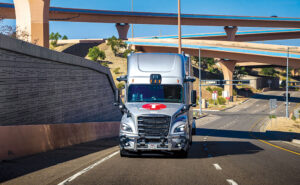
Advocates for the self-driving vehicle industry in July warned that years of regulatory inaction is putting American manufacturers at a competitive disadvantage and urged Congress to expand their ability to test and eventually sell autonomous cars and trucks.
“I’m sure it’s rare for you that someone from the private sector comes before you to ask, to plead, for their business to be regulated,” said John Bozzella, president for the Alliance for Automotive Innovation, which represents several major auto manufacturers. “We’re at a crossroads, and without a comprehensive AV framework, companies are not going to succeed.”
While most Republicans, and some Democrats, on the House Energy and Commerce Committee seemed enthusiastic about speeding up the pace of AV (autonomous vehicle) research and testing in America, others warned about going too fast without addressing long-standing issues of safety and liability.
Rep. Frank Pallone of New Jersey, the committee’s ranking Democrat, warned that Congress “cannot simply dust off 6-year-old legislation and ignore the substantial issues that have emerged in recent years. … Troubling safety incidents are mounting, liability loopholes are emerging.”
The legislation in question is a 2017 bill on AV regulations that passed the House but stalled in the Senate.
Currently AV manufacturers can deploy a maximum of 2,500 self-driving vehicles for testing, provided they have permission from the National Highway Traffic Safety Administration (NHTSA). AV advocates complain the limits represent a bottleneck that is holding back the growth of the industry at a crucial time. The NHTSA has spent more than a year considering a petition from General Motors to deploy 2,500 vehicles from its Cruise AV unit for street testing and a ride-hailing service.
Among the proposals before the committee is one that would provide exemptions for manufacturers to deploy thousands of autonomous vehicles without meeting existing auto safety standards.
One of the main sticking points surrounds liability in case of an accident caused by a malfunctioning AV. Industry advocates argue that accidents involving self-driving vehicles are exaggerated and that the machines are already far more reliable than human beings. Gary Shapiro, head of the Consumer Technology Association, told the committee that self-driving vehicles “are never distracted, never tired, they don’t get drunk, and they don’t fall asleep.”
But Rep. Kelly Armstrong (R-ND) countered that the human driving model at least provides clarity on who to blame and who should pay for the damage.
“When somebody gets injured, somebody gets sued,” Armstrong said. “When a minivan goes off the road in Florida and five people are killed, somebody is getting sued. … Each one of these (crashes) is still going to be subject to a plaintiff’s lawyer, an insurance company, and a defense lawyer. And until we’ve figured that out, this is just a science project.”
On General Motors’ earnings conference in July, Cruise CEO Kyle Vogt said his company’s analysis of the first million miles of autonomous vehicle use shows they had 54% fewer collisions than humans in similar environments, and 92% fewer crashes where the autonomous vehicle was at fault.
“The vast majority of collisions are caused by inattentive or impaired human drivers, not the AV,” he said.
But auto safety advocates have cast doubt on industry claims about the safety of autonomous vehicles and the numbers they use to back up those claims.
Missy Cummings, a former senior safety adviser to the National Highway Traffic Safety Administration who is now an engineering and computer science professor at George Mason University, said that analysis of available data challenges those safety claims.
Robotaxis from Cruise are eight times more likely to get into a crash than humans, she said, while autonomous vehicles from Waymo, a spinoff of Google, are four times more likely than humans to crash. Waymo said it disagrees with Cummings’ findings.
“I think we need to take their claims of being safer with a grain of salt,” Cummings said.
Transport of EVs poses greater fire risk for maritime vessels than trucks, trains

Electric vehicles are crisscrossing the globe to reach eager buyers, but the battery technology involved in zero- emission automobiles is exposing underprepared maritime shippers to the risk of hard-to-control fires, according to industry, insurance, and emergency response officials.
That risk was put in the spotlight by a burning car carrier drifting off the Dutch coast in late July. The Dutch coast guard said the fire’s cause was unknown, but Dutch broadcaster RTL released a recording in which an emergency responder is heard saying “the fire started in the battery of an electric car.”
While all logistics companies deal with the risk of EV lithium-ion batteries burning with twice the energy of a normal fire, the maritime industry hasn’t kept up with the developing technology and how it creates greater risk, maritime officials and insurers said. There were 209 ship fires reported during 2022, the highest number in a decade and 17% more than in 2021, according to a report from insurer Allianz Global Corporate & Specialty (AGCS). Of that total, 13 occurred on car carriers, but how many involved EVs was not available.
Dutch news agency ANP, citing operator “K” Lines, said there were almost 4,000 cars, including 25 EVs, on the burning ship. A person answering the phone at “K” Line’s main U.S. office said he was not authorized to discuss the fire. Japan’s Shoei Kisen, which owns the ship, said it was working with authorities to get control of the fire.
The cause of the fire, while still officially undetermined, has raised questions about “what blind spots there are when transporting electric cars powered by batteries — which, when they catch fire, can’t be extinguished with water, or even by oxygen deprivation,” said Nathan Habers, spokesperson for the Royal Association of Netherlands Shipowners (KVNR).
“The first question that comes to mind is: Does the current code stack up against the risk profile of this type of goods?” he added.
One hazard in lithium-ion batteries is “thermal runaway,” a rapid and unstoppable increase in temperature that leads to fires in EVs that are hard to extinguish and can spontaneously reignite.
Fire extinguishing systems on the massive ships that haul cars weren’t designed for those hotter fires, and shipping companies and regulators are scrambling to catch up, said Douglas Dillon, executive director of the Tri-state Maritime Safety Association that covers Delaware, Pennsylvania and New Jersey.
Recent fire-related losses are resulting in increased insurance costs for automakers shipping cargo and costs are likely to increase for vessel owners as well, said John Frazee, a managing director at insurance broker Marsh. As ship owners seek to limit losses by legally pursuing automakers whose vehicles are determined to have caused a fire, automakers are buying additional liability protection, he said.
Exacerbating the risks is the business model used by the companies that includes tightly packed ships. Auto carriers like the burning ship are known as RoRos, which stands for roll-on/roll-off – the way cars are loaded and unloaded.
RoRos are like floating parking garages and can have a dozen or more decks carrying thousands of vehicles, industry officials said. Unlike parking lots, however, cars are parked bumper-to-bumper with as little as a foot or two of space overhead.
Firemen typically put out EV battery fires on roadsides by clearing the area around the burning vehicle and flooding the underside with water, something difficult to do on a RoRo, Dillon said.
“There’s no way for a firefighter in protective gear to get to the location of a fire” on a ship, he said, adding the cramped conditions increase the danger of getting trapped.
“While trains and tractor-trailers also transport EVs, isolating and extinguishing fires is easier because workers can unhook a rail car and a trucker can pull over, said Frazee.
Frazee expects insurers to lead the charge on strengthening safety systems on ships. Options being worked on include new chemicals to douse flames, specialized EV fire blankets, battery piercing fire hose nozzles and proposals to segregate EVs.
“I see no quick solution,” Frazee said.
The International Maritime Organization, which sets regulations for safety at sea, plans to evaluate new measures next year for ships transporting EVs in light of the growing number of fires on cargo ships, a spokesperson told Reuters.
That could include specifications on types of water extinguishers available on boats and limitations on the amount a battery can be charged, which impacts flammability.
With EVs here to stay, KVNR’s Habers said his group is discussing tightening regulations to account for the additional safety risks.
“There is already a whole lot of communication underway about this,” he said, “but with this incident it becomes apparent we might need to speed up the process, especially when you consider that the number of this sort of cars is only going to rise.”
Global auto sales last year totaled 81 million vehicles, 9.5% of which were EVs, according to EV-Volumes.com. China and Europe have been the most aggressive regions in pushing automakers to shift to EVs, and U.S. President Joe Biden’s administration has proposed rules that could result in as much as two-thirds of the new vehicle market shifting to EVs by 2032.
This article originally appeared in the September/October 2023 edition of Truckload Authority, the official publication of the Truckload Carriers Association.
The Truckload Authority News Staff, comprised of award winning journalists and graphic artists, produces content for Truckload Authority, working in cooperation with the Truckload Carriers Association staff. Truckload Authority aims to keep TCA members abreast on the latest trends in the trucking industry as well as articles that feature TCA member executives and drivers. The Truckload Authority staff is based in Little Rock, Arkansas.

